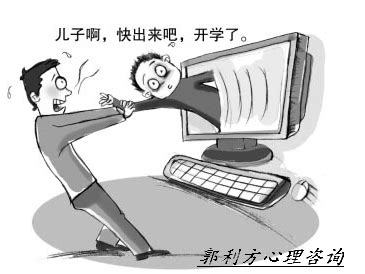体育中考篮球绕杆视频
The Pros and Cons of Physical Education in Schools
In recent years, the importance of physical education (PE) in schools has been increasingly recognized as a crucial component of a wellrounded education. However, as with any educational program, there are both advantages and disadvantages to incorporating PE into school curriculums.
1. Promotes Physical Fitness
One of the primary benefits of PE in schools is that it promotes physical fitness among students. Regular exercise helps improve cardiovascular health, builds strength, and enhances flexibility, leading to overall better health and wellbeing.
2. Develops Motor Skills
PE programs often focus on the development of fundamental motor skills such as running, jumping, throwing, and catching. These skills are essential for a child's physical development and can have a positive impact on their coordination and balance.

3. Encourages Teamwork and Social Skills
Many PE activities involve team sports and cooperative games, which can help students learn how to work together, communicate effectively, and resolve conflicts. These experiences promote social skills and teach important lessons about collaboration and sportsmanship.
4. Reduces Stress and Improves Mental Health
Physical activity has been shown to reduce stress and anxiety levels while improving mood and overall mental health. PE provides students with an outlet to release pentup energy, relax, and focus, ultimately enhancing their academic performance.
5. Instills Healthy Habits
By introducing students to the importance of regular exercise and physical activity from a young age, PE programs help instill healthy habits that can last a lifetime. These habits can contribute to reduced rates of obesity, diabetes, and other lifestylerelated diseases.
1. Limited Time and Resources
One of the primary challenges of implementing PE programs in schools is the limited time and resources available. Schools may struggle to allocate enough time for PE classes or lack proper facilities and equipment for effective physical education.
2. Lack of Qualified Instructors
Another potential drawback is the shortage of qualified PE instructors in some schools. Without properly trained teachers, students may not receive the guidance and instruction needed to maximize the benefits of physical education.
3. Emphasis on Competition
Some PE programs place a strong emphasis on competition, which can lead to feelings of inadequacy or exclusion among students who are not athletically inclined. It is important to balance competition with cooperation and individual improvement.
4. Risk of Injury
Participating in physical activities carries a risk of injury, and PE classes are no exception. Without proper supervision and safety protocols, students may be at an increased risk of getting hurt during PE sessions.
5. Lack of Flexibility in Curriculum
Schools often have set curriculums that leave limited room for flexibility in PE programs. This lack of adaptability may not cater to the diverse needs and interests of students, potentially leading to disengagement and lack of motivation.
While physical education in schools offers numerous benefits for students, it also comes with its own set of challenges and limitations. By addressing these drawbacks and maximizing the advantages of PE programs, schools can create a wellrounded educational experience that prioritizes both physical and mental wellbeing.
体育资讯
MORE>-
02-23少女花150元文身,清洗需76.9万元
-
02-23哪吒周边市场惊现盗版,商家获利200万元
-
02-23一场激情与实力的碰撞——预测与故事
-
02-23美国将完全退出联合国?联合国回应
-
02-23特朗普撤换美军最高将领,影响与后果
-
02-23俄罗斯与比利时实力对比与前景展望
-
02-22历史对决,实力较量——一场激情与智慧的足球盛宴
-
02-22欧洲杯积分榜——最新赛况与分析
-
02-22世界级对决,谁能笑到最后?
-
02-21瑞士VS威尔士,竞技与友谊的交织之旅
-
02-21房价止跌回稳,一线城市房价将保持稳定
-
02-21征服哥本哈根,曼彻斯特城在英超联赛中的实力与决心
-
02-21员工偷换理发店收款码3年窃取189万,道德沦丧还是管理漏洞?
-
02-21国产剧告别假穷人,真实主义的胜利
-
02-21布鲁日 vs 马竞——引言与引子碰撞的精彩时刻
- 搜索
- 最近发表
-
- 春回大地农事起 春耕备耕正当时
- 少女花150元文身,清洗需76.9万元
- 一届震撼人心的全明星赛——2012年NBA全明星录像回顾与解读
- 老师一堂课没收几十个裂空爪
- 法国在国际足坛的荣耀新篇章,从欧洲最后堡垒的黯淡到王者归来
- 内地版萧亚轩——张雨绮
- 从NBA全明星赛录像,解读2023年扣人心弦的赛事
- 外卖小哥的感激之情
- 超级巨星云集,美国足球联赛的燃情较量即将上演!
- 农文旅融合绘就美丽乡村新图景
- 史诗般的半决赛之旅,不容错过的精彩瞬间
- 哪吒周边市场惊现盗版,商家获利200万元
- 一场激情与实力的碰撞——预测与故事
- 美国将完全退出联合国?联合国回应
- 梦幻十一人,解读巴塞罗那最佳阵容,定义卓越表现与潜力展示
- 特朗普撤换美军最高将领,影响与后果
- 西方世界视角下的袁隆平,一位影响深远的中国科学家
- 小因扎吉引领国际米兰新篇章,深度解析与实用建议
- 俄罗斯与比利时实力对比与前景展望
- 孙莉再战大银幕,女神归来的魅力依然闪耀,唐诗三百首的全新演绎
- 标签列表
-
- 欧洲杯 (9)
- 欧洲杯都有哪些球队参加 (13)
- 2024欧洲杯比赛时间 (14)
- 2024欧洲杯百度百科 (18)
- 2024年欧洲杯预选赛 (15)
- 欧洲杯为什么不是2020 (8)
- 欧洲杯如何竞猜 (9)
- 欧洲杯小组赛怎么分组 (11)
- 欧洲杯2024在哪个国家 (9)
- 欧洲杯比赛时间表 (8)
- 在哪里可以看欧洲杯预选赛 (11)
- 欧洲杯在哪个国家举行2024 (10)
- 2024欧洲杯主办城市 (16)
- 欧洲杯为什么没有中国 (12)
- 欧洲杯哪个球队身价最高 (9)
- 欧洲杯多少支球队参加 (11)
- 欧洲杯共多少场比赛 (11)
- 欧洲杯的球队有哪些 (9)
- 欧洲杯为什么没有直播 (9)
- 欧洲杯参赛球队有几支 (15)
- 欧洲杯一共多少球队 (11)
- 咪咕视频体育直播 (12)
- 世界杯亚洲区预选赛 (9)
- 直播吧 (14)
- 直播间买翡翠原石被骗 (9)





